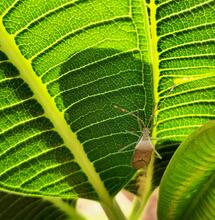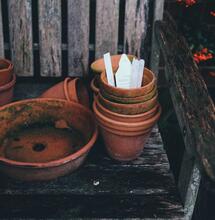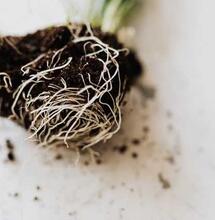Why You Should Flush.

When growing indoors, there is usually a chemical-rich nutrient feeding solution used to support and feed the rapid growth of the plants in question. While these nutrients are vital in producing such crops, they often leave unwanted chemical traces. These traces can show themselves in the plant as a chemical like the taste, smell and colour. Whether hobbyist or commercial, most indoor growers will "flush" their plants to remove these unwanted effects. The Flush cleans the plant of these unwanted chemicals, which it may still be storing.
The plant's vascular system transports nutrients and water around the plants via the roots (considered the start of the vascular system). It feeds the whole plant, including the leaves, to fuel the photosynthesis process, help the fruits to develop and assist with overall growth and development.
Any reserves of nutrients, starches or sugars that the plant doesn't need are stored for later use. The principal reserves are held within the stem and root ball. In a typical plant, under normal conditions, these deposits would be made up of natural low-level chemical elements released when the plant needs them over the different stages of its lifecycle. In indoor growing, a controlled environment means abundant nutrients and chemicals being fed to the plant. Thus, the reserve stores of these chemicals are not needed. These chemicals need to be removed before harvest to fit your yields for human consumption.
Within a plants vascular system, there are two main paths. The first path is called the Xylem, composed of 4 different cell structures. This path transports water and dissolved nutrients from the roots throughout the plant and its organs. It can also store dissolved nutrients and water for later use. The second vascular path is called the Phloem. The Phloem transports the sugars produced in the leaves around the plant and its organs.
Initially, the Flushing process will stop any further intake of nutrient elements via the Xylem and replace it with water. It's the same train of thought as giving somebody who's drunk a glass of water to sober them up/dilute the alcohol already in their system.
The second part of the Flush is to remove/dilute/flush out as many active chemical elements already present in the plant vascular system as possible.
Though some argue otherwise, many serious growers have affirmed the importance of flushing your plants. Most experienced cultivators have tried not flushing before harvest, which has caused them to experience the glaring difference in the yield quality.
You see that your plants store excess amounts of nutrients, salts, and other compounds during the growing cycle. Suppose you don't allow the plants a chance to dispose of these surplus compounds by flushing them before harvest. Failing to flush can also cause your product to suffer from adverse side effects, such as black ash and an unpleasant chemical taste and smell. In that case, your final product will be much harsher and more bitter tasting.



.png)




